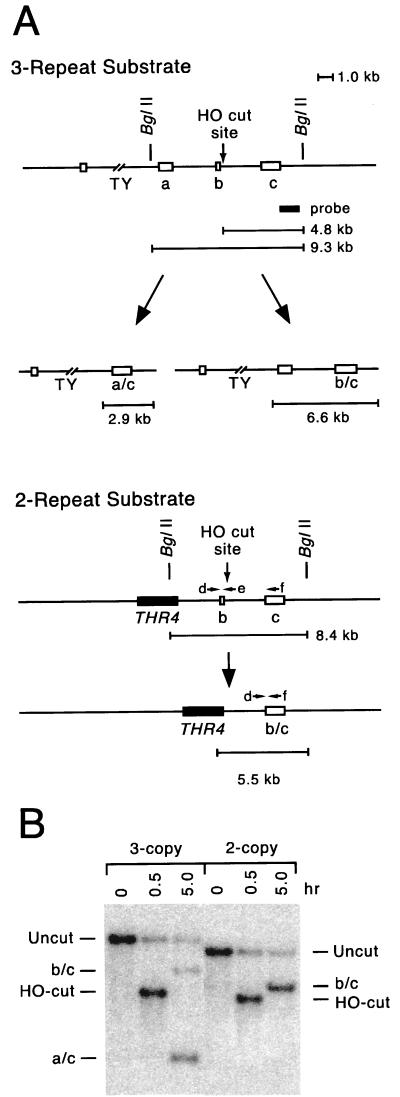FIG. 2.
Competition between repeated sequences. (A) Strains that have two or three repeated sequences derived from the HindIII restriction fragment containing URA3 were constructed (open boxes). The three-repeat substrate possesses the ura3-52 sequence (a), a 205-bp sequence (b), and the URA3 HindIII restriction fragment (c). Intervening sequences are derived from pUC9, lambda phage, and the 117-bp HO cut site from MATa (51). A DSB at the HO cut site initiates SSA between the repeats and results in two deletion products, a/c and b/c. In the two-repeat substrate, only the b/c product is generated. Primers labeled d, e, and f were used to screen colonies based on structure by PCR analysis (see text). Structures are oriented from centromere distal to centromere proximal (left to right). (B) DNA from tNS1379 (two-repeat strain) and tNS62 (three-repeat strain) was prepared for Southern analysis before and 5 h after HO induction. Locations of the probe and BglII sites used for the Southern blots are shown in panel A. For the two-repeat strain, the Southern blot shows the uncleaved DNA band before induction, the HO-cleaved band (4.8 kb) at 0.5 h, and the product band (5.5 kb) 5 h after induction. The three-repeat strain yielded the uncleaved DNA band (9.3 kb) and two product bands (2.9 and 6.6 kb).

